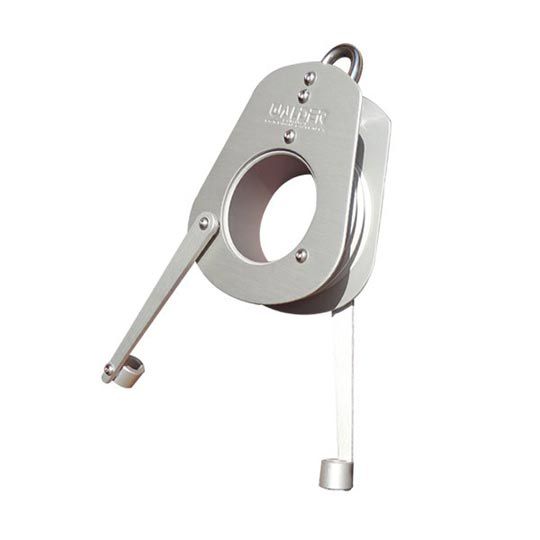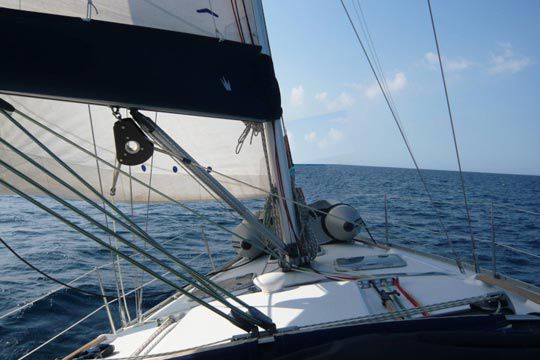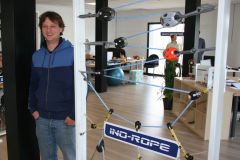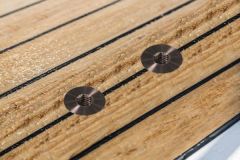The Walder boom brake at 40. It was born from the spirit of a yachtsman and his partner: Ernest Waelder and Noel Wyatt. In 1976, they were looking for a system to erase the dramatic consequences, for the crew and the boat, of a violent gybe, badly controlled or untimely. This is how the Walder boom brake was born.

The principle of operation is simple. Braking is achieved by the friction of the rope which is wound on the drum. The speed of the boom's passage during the gybe is adjusted by playing on the tension of the rope from the cockpit. This system avoids displacement on deck to install or remove a boom retainer.
What is quite incredible is that the product has not undergone any major changes since its creation. We have just seen the adoption of stainless steel guide arms for more robustness and the installation of a swivel attachment. Apart from a colour change with anodising shades to match the boom, the Walder has remained the same for years. However, in 2009, Walder modernised its boom brake to optimise the mechanical principle of the brake as much as possible, thus reducing its weight by around 30% depending on the model, and making it more discreet and more aesthetic under the boom.

Used by all the sailors in the world, the Walder has become the emblem of the boom brake. He was on the racing yachts in the first Vendée Globe in 1988 (Philippe Poupon, Loïck Peyron, Titouan Lamazou, Alain Gautier ...). Today, the range covers all mainsail areas up to 110 m2.

40 years later, Walder continues to set the standard for boom brakes. More than 10,000 devices have already been installed worldwide. It is abroad that sales are growing the most with 2/3 of Walders leaving France. A beautiful history of sea and family since the French company which manufactures them is today directed by the son of the inventor: Philippe Wyatt.






